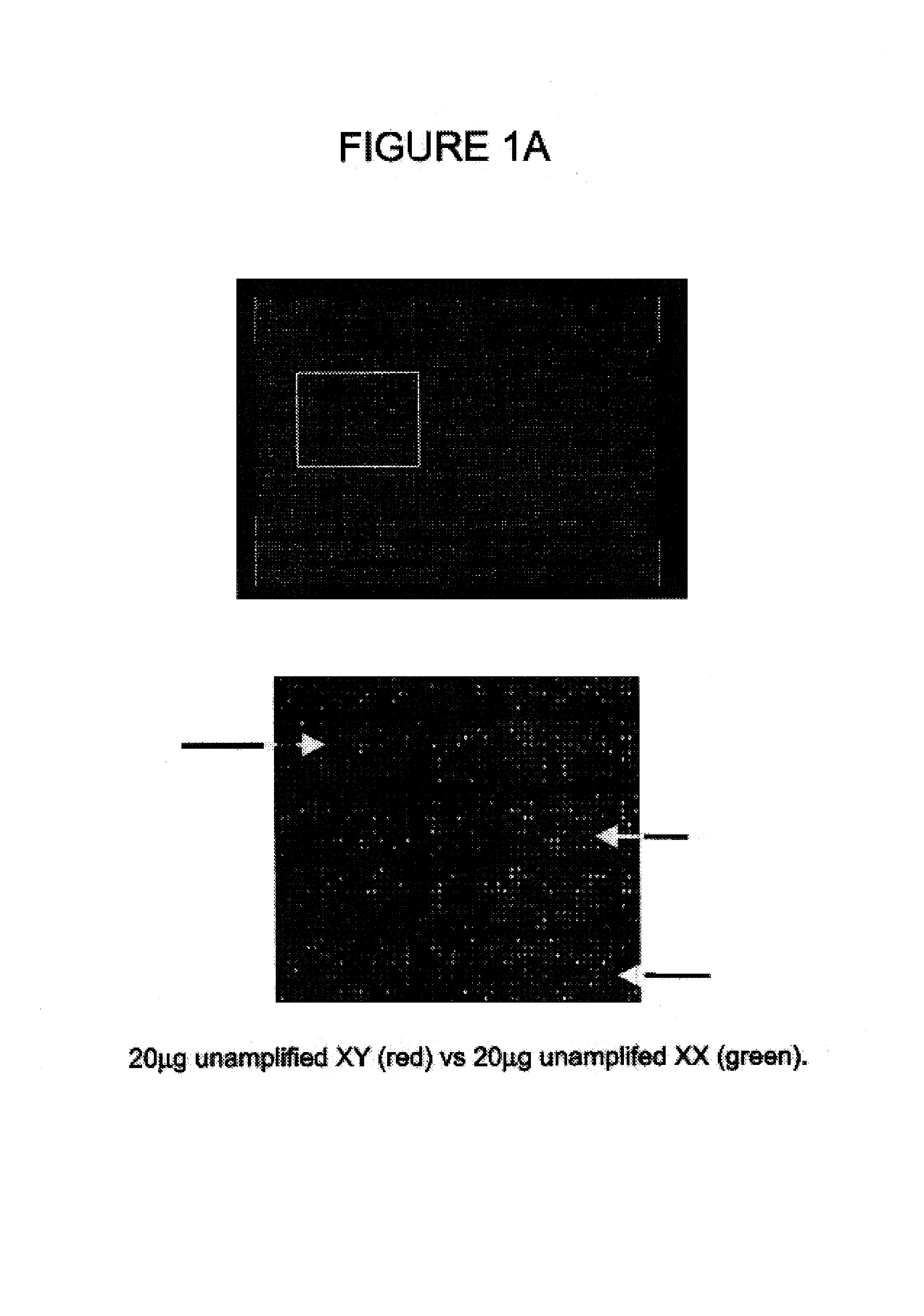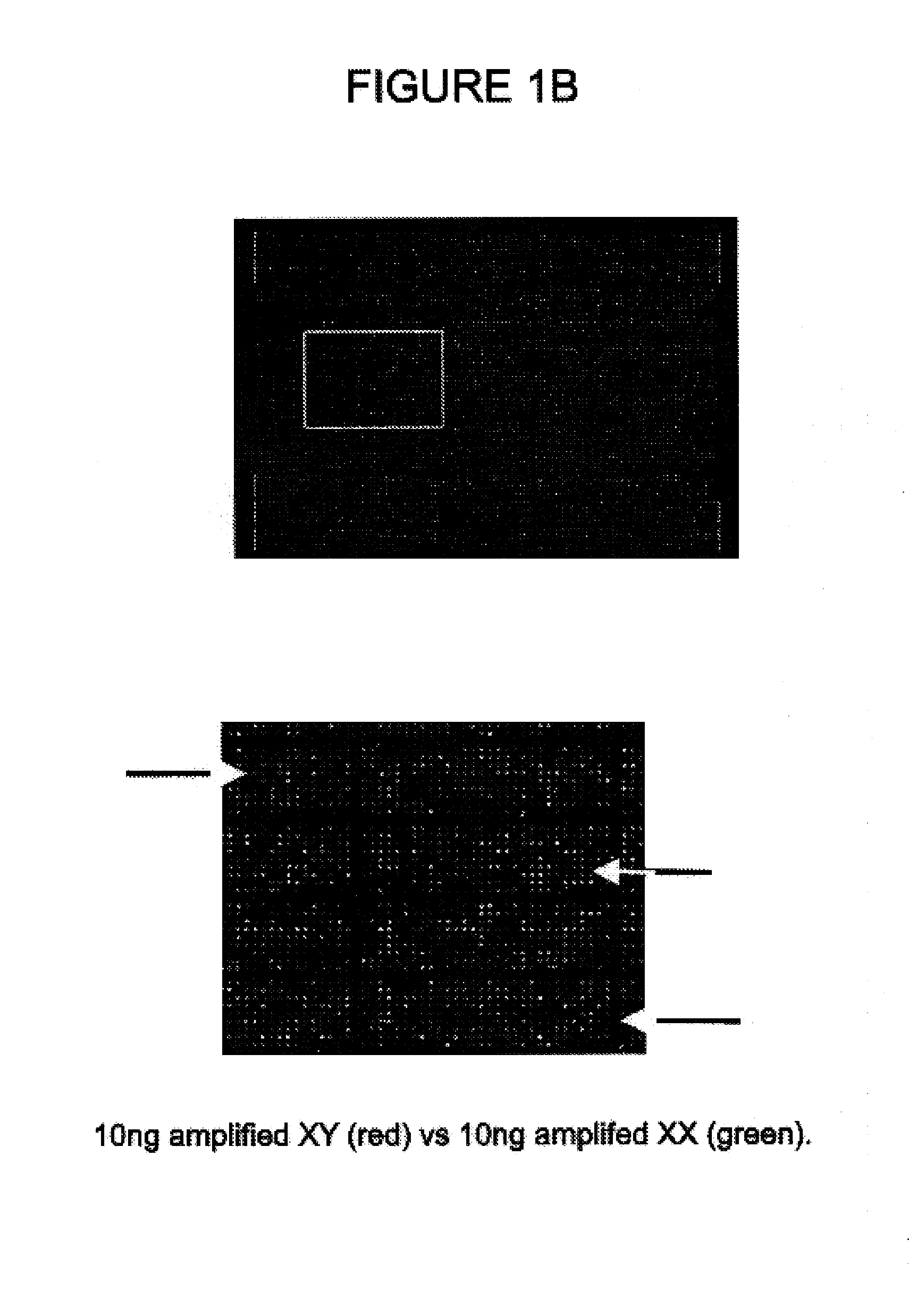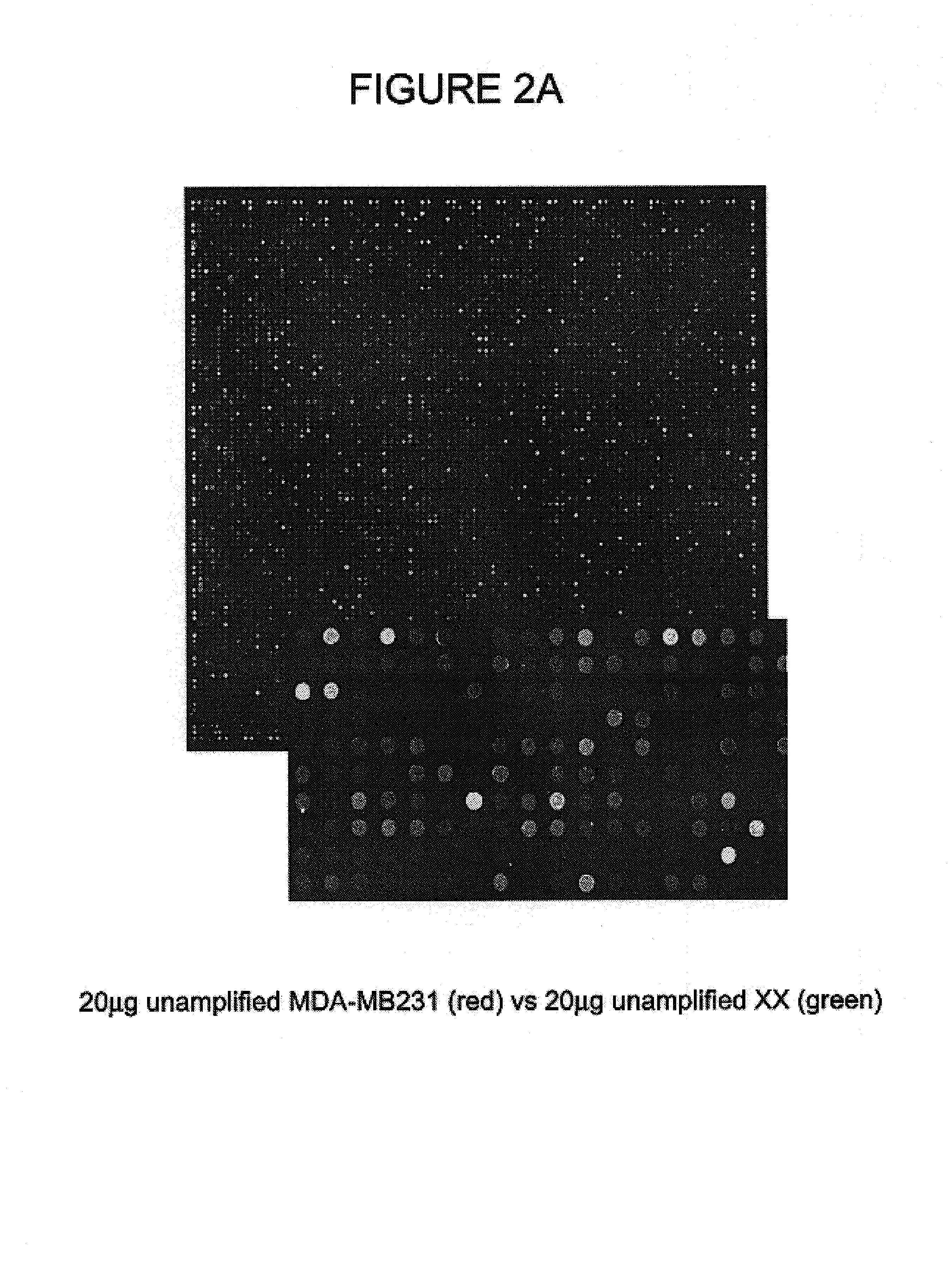Comparative genomic hybridization assays using immobilized oligonucleotide targets with initially small sample sizes and compositions for practicing the same
a technology of immobilized oligonucleotide targets and genomic hybridization, applied in the field of comparative genomic hybridization, can solve the problems of perinatal genetic problems frequently, loss or gain of chromosome segments, and methods with significant limitations in their ability to detect chromosomal alterations at single gene resolution
- Summary
- Abstract
- Description
- Claims
- Application Information
AI Technical Summary
Problems solved by technology
Method used
Image
Examples
Embodiment Construction
[0029]Comparative genomic hybridization assays and compositions for use in practicing the same are provided. In the subject methods, at least first and second genomic templates are prepared from first and second genomic sources using an amplification reaction that employs a highly processive polymerase, where the amplification reaction produces amplification products having an average molecular size of at least about 10 kb with substantially no amplification bias. The resultant templates are then employed to produce at least first and second probe nucleic acid populations. The resultant probe nucleic acid populations are then contacted with a plurality of oligonucleotide target elements immobilized on a solid support surface and the binding of at least first and second populations is then evaluated. Also provided are kits for use in practicing the subject methods.
[0030]Before the subject invention is described further, it is to be understood that the invention is not limited to the ...
PUM
| Property | Measurement | Unit |
|---|---|---|
| Digital information | aaaaa | aaaaa |
| Length | aaaaa | aaaaa |
| Electrical resistance | aaaaa | aaaaa |
Abstract
Description
Claims
Application Information
 Login to View More
Login to View More - R&D
- Intellectual Property
- Life Sciences
- Materials
- Tech Scout
- Unparalleled Data Quality
- Higher Quality Content
- 60% Fewer Hallucinations
Browse by: Latest US Patents, China's latest patents, Technical Efficacy Thesaurus, Application Domain, Technology Topic, Popular Technical Reports.
© 2025 PatSnap. All rights reserved.Legal|Privacy policy|Modern Slavery Act Transparency Statement|Sitemap|About US| Contact US: help@patsnap.com



